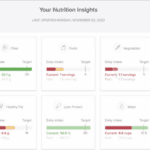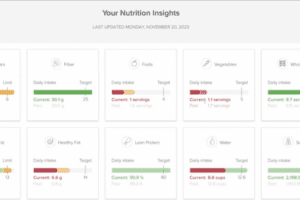The following is a guest article by Mariann Yeager, CEO at The Sequoia Project.
What a difference a day makes.
On October 6, 2022, the healthcare and health IT community woke to a new reality – one in which electronic health information (EHI) included far more than it did the day before.
Why was that so important? Because penalties for information blocking – that is, any practice that interferes with access, exchange, or use of electronic health data – are tied to the definition of EHI. With many more types of health information specifically included as EHI, organizations regulated under the 21st Century Cures Act are on the hook to respond to requests for that information from individuals, providers, public health agencies, and health information exchanges.
The expanded definition of EHI now includes virtually any health information tied to an individual that is used in decision making. If it’s maintained or transmitted electronically and it’s not explicitly excluded, it is now included. For example, medical and billing information contained in the designated record set are included, as is any EHI held by EHR software or by a health information network.
Who is Accountable for Compliance With the New EHI Definition?
The rules against information blocking apply to any “actor” as defined in the Cures Act. Actors include healthcare providers, developers of certified health IT, health information exchanges (HIEs), and health information networks (HINs).
The standard for compliance is highest for vendors, developers, and HIEs/HINs, who are responsible for any practice they do know or should know to constitute information blocking. In contrast, providers are responsible for practices they know to be both unreasonable and likely to block information sharing.
For all actors, the penalties can be severe, and ONC established a mechanism for collecting complaints. To date, the agency has logged – and begun reviewing – more than 450 online claims of information blocking by patients, patient advocates, providers, and others.
Practical Resources for all Types of Actors
As part of our Interoperability Matters Initiative, The Sequoia Project convened a diverse and dedicated workgroup to consider the practical challenges of implementing the information blocking rule from a wide variety of angles. The Information Blocking Compliance Workgroup included leaders and experts representing health information networks, health IT developers (including EHRs), providers, payers, associations, and other key stakeholders. Drawing on their on-the-ground insights, the workgroup developed and published a robust suite of helpful resources to help actors understand the new reality, including:
- Operational implications of the expanded definition of EHI
- Related considerations associated with the new EHI definition
- An infographic to illustrate the complex set of information systems now included in the expanded EHI definition
- More than 150 practical tips – or good practices – for information sharing and information blocking compliance
- Key policy considerations
Together, these resources can inform action plans for organizations to review their data and systems and define processes for responding to EHI requests, managing and responding to complaints, and applying the eight allowed exceptions to the information blocking rule.
Because of the diversity of our workgroup members, the recommendations contained in these resources were designed to accommodate organizations of varying structure, size, healthcare role, and experience with information blocking compliance across actor categories.
Compliance can Drive a Culture of Information Sharing
There’s no question healthcare organizations will have to update their processes and technology systems to support expanded health data sharing, but it will be worth it. Every effort actors make to enable information sharing is a boon for improved patient care. The more organizations invest in compliance, the more benefit that individuals, providers, payers, and public health will realize from increased, appropriate access to health data.
Equally important is the tremendous potential for innovation that comes with greater access to health data. In the near future, we expect to see better integration of apps with existing health IT. As the broader app economy takes off, that will drive even more innovation in service of better care and improved health outcomes.
So, as organizations create and implement action plans for full compliance with the information blocking rule, remember that this work brings us closer to our shared goal of nationwide interoperability and health information exchange.
Accessing Best Practices From your Peers
As the healthcare and health IT community works to comply with the expanded definition of EHI, The Sequoia Project is committed to providing additional support and guidance – including webinars and interactive forums – to help all actors answer outstanding questions, resolve gaps and barriers, and reap the many benefits of wider EHI sharing.
 About Mariann Yeager
About Mariann Yeager
Mariann Yeager is CEO of The Sequoia Project, an independent nonprofit that works with government and industry to advocate for nationwide health information exchange.













